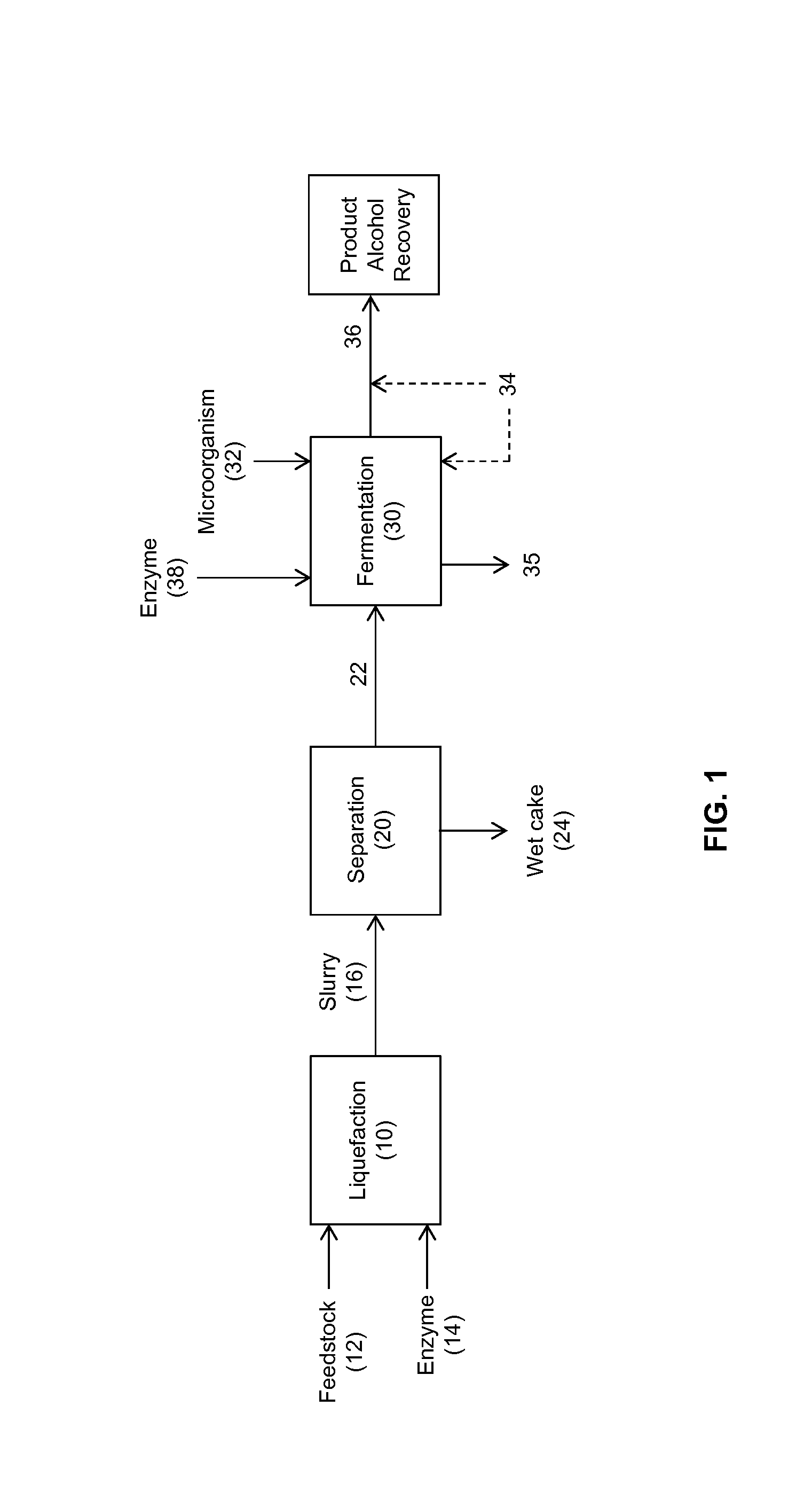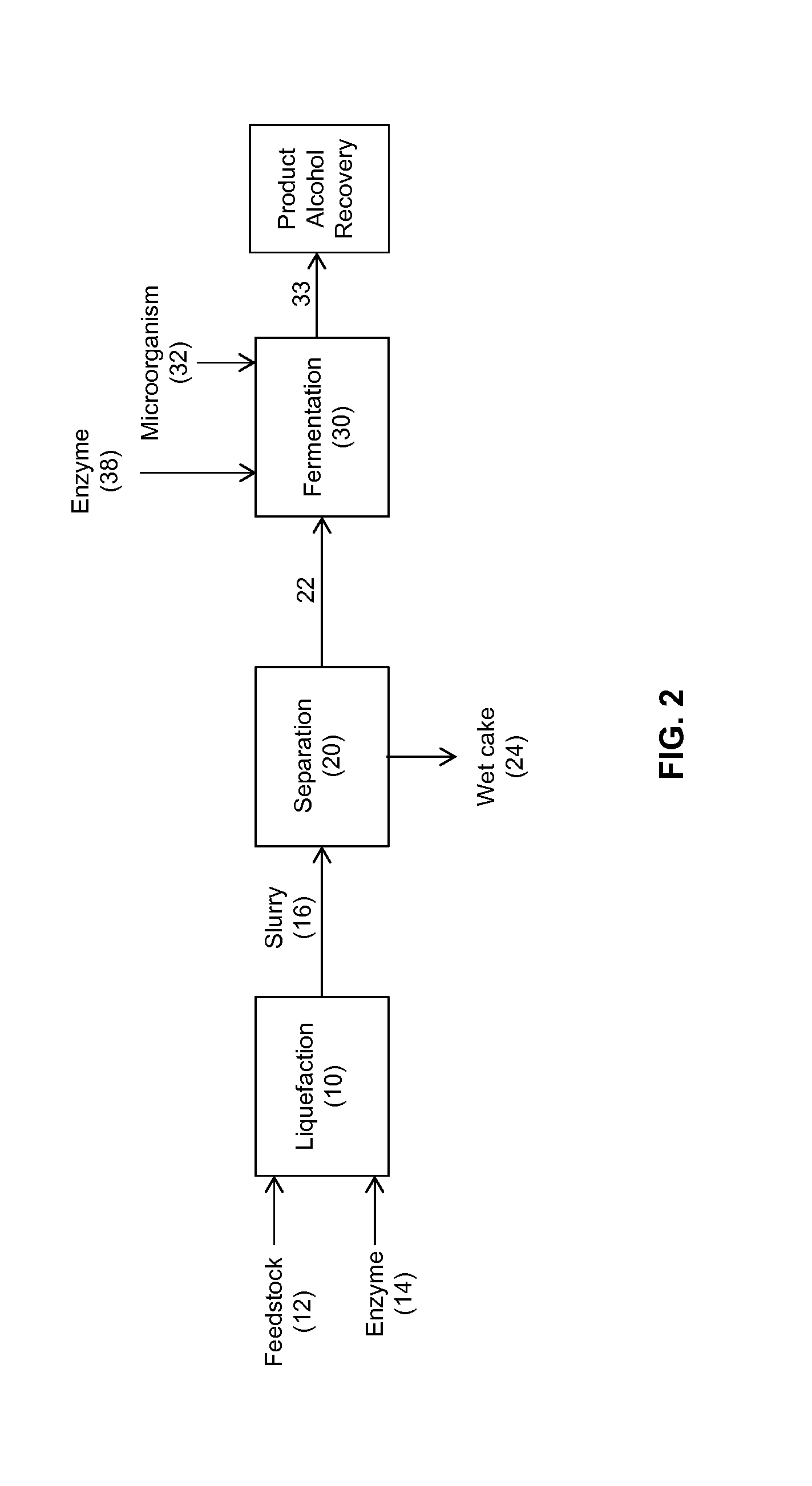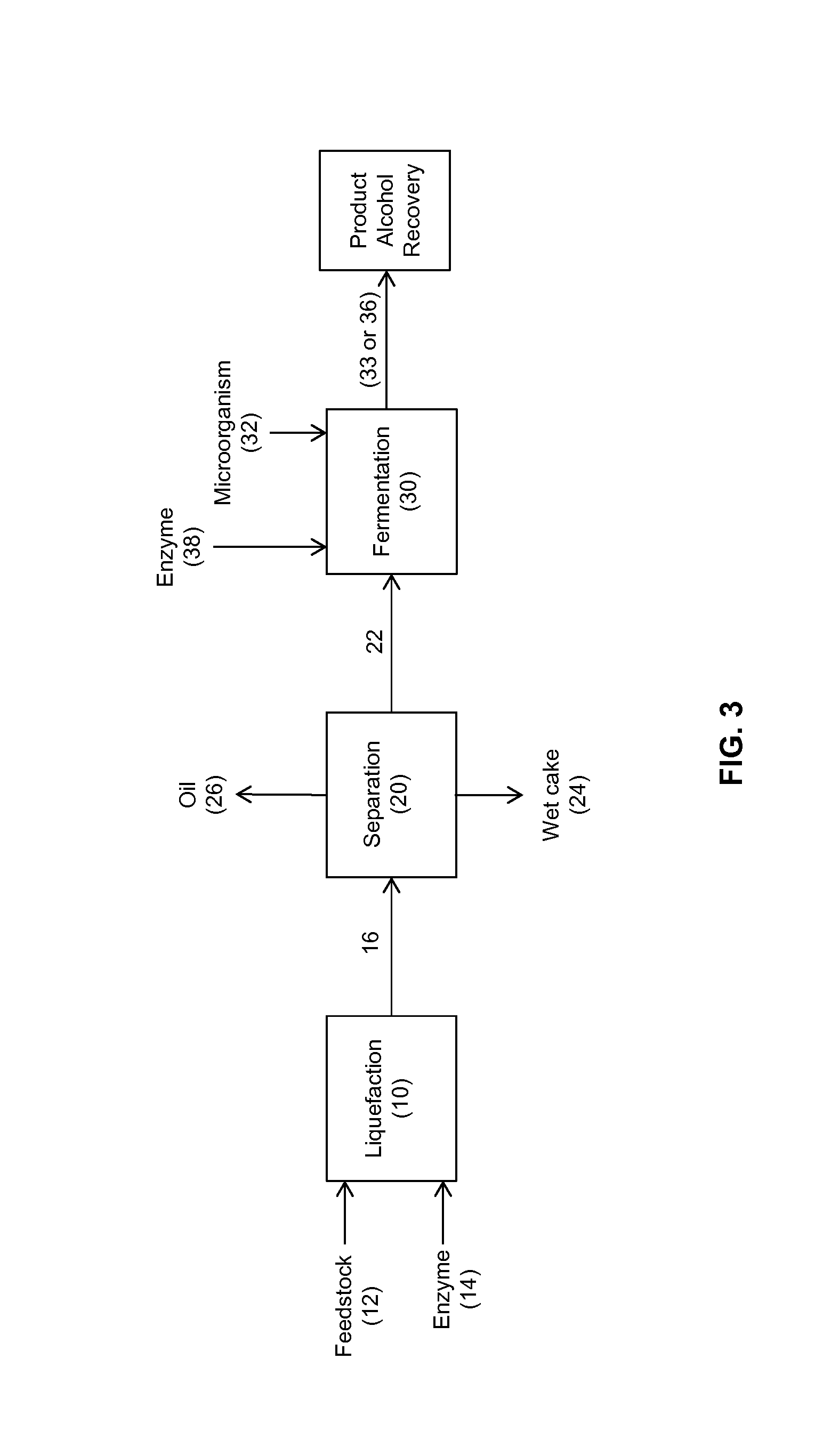Processes and systems for the fermentative production of alcohols
- Summary
- Abstract
- Description
- Claims
- Application Information
AI Technical Summary
Benefits of technology
Problems solved by technology
Method used
Image
Examples
example 1
Process for Production and Recovery of Butanol Produced by Fermentation
[0301]The processes described herein may be demonstrated using computational modeling such as Aspen modeling (see, e.g., U.S. Pat. No. 7,666,282). For example, the commercial modeling software Aspen Plus® (Aspen Technology, Inc., Burlington, Mass.) may be used in conjunction with physical property databases such as DIPPR, available from American Institute of Chemical Engineers, Inc. (New York, N.Y.) to develop an Aspen model for an integrated butanol fermentation, purification, and water management process. This process modeling can perform many fundamental engineering calculations, for example, mass and energy balances, vapor / liquid equilibrium, and reaction rate computations. In order to generate an Aspen model, information input may include, for example, experimental data, water content and composition of feedstock, temperature for mash cooking and flashing, saccharification conditions (e.g., enzyme feed, star...
example 2
Process for Recovery of Ethanol Using an Extractant Column
[0305]A 1″ diameter Karr® extraction column (Koch Modular Process Systems, Paramus, N.J.) was used to process fermentation broth that was produced during ethanol fermentation. The column contains a series of plates that run down the length of the column and which are attached to a central shaft. The shaft is attached to a drive which can move the perforated plates (¼″ diameter perforations) up and down in a reciprocating motion. The frequency of the motion was a variable during testing, but both the stroke length of the oscillation (0.75″) and the spacing of the trays (2″) were fixed. The column used had a plate stack height of 3000 mm.
[0306]The top of the column was provided with an aqueous feed consisting of fermentation broth, while the bottom of the column was provided with a feed of corn oil fatty acids (COFA) as the extractant. The two feeds flowed countercurrent to one another through the column, and were collected as ...
example 3
Effect of Fermentation Conditions on Extraction Column Capacity
[0313]The nature of fermentation broth is not static, but changes as the fermentation process progresses. In fermentation, the concentration of carbohydrates decreases as the carbohydrates are metabolized by microorganisms. This compositional change in the fermentation broth will alter physical parameters such as viscosity and surface tension of the fermentation broth, which have an effect on the extraction process. In addition to the changes in concentration, at intermediate times a considerable amount of CO2 is evolved; and this CO2 will impact the flow of the aqueous and organic liquids through the column.
[0314]A 1″ diameter glass Karr® extraction column (Koch Modular Process Systems, Paramus, N.J.), outfitted with PTFE internals, was used to process fermentation broth from an ethanol fermentation. The processing was done at several discrete times during the course of the fermentation. Organic extractant (COFA) was th...
PUM
| Property | Measurement | Unit |
|---|---|---|
| Phase separation | aaaaa | aaaaa |
| Size | aaaaa | aaaaa |
| Hydrophilicity | aaaaa | aaaaa |
Abstract
Description
Claims
Application Information
 Login to view more
Login to view more - R&D Engineer
- R&D Manager
- IP Professional
- Industry Leading Data Capabilities
- Powerful AI technology
- Patent DNA Extraction
Browse by: Latest US Patents, China's latest patents, Technical Efficacy Thesaurus, Application Domain, Technology Topic.
© 2024 PatSnap. All rights reserved.Legal|Privacy policy|Modern Slavery Act Transparency Statement|Sitemap



